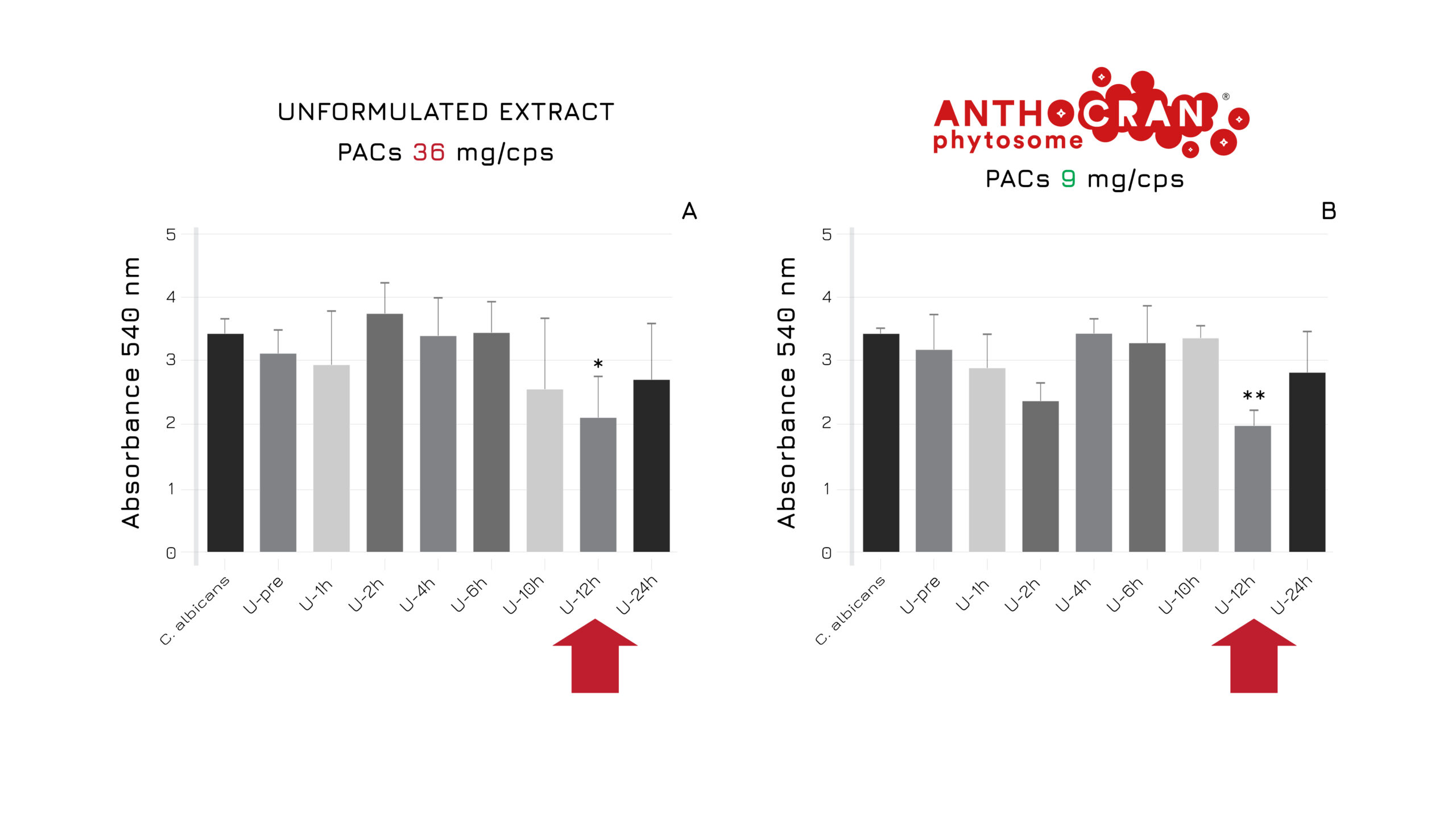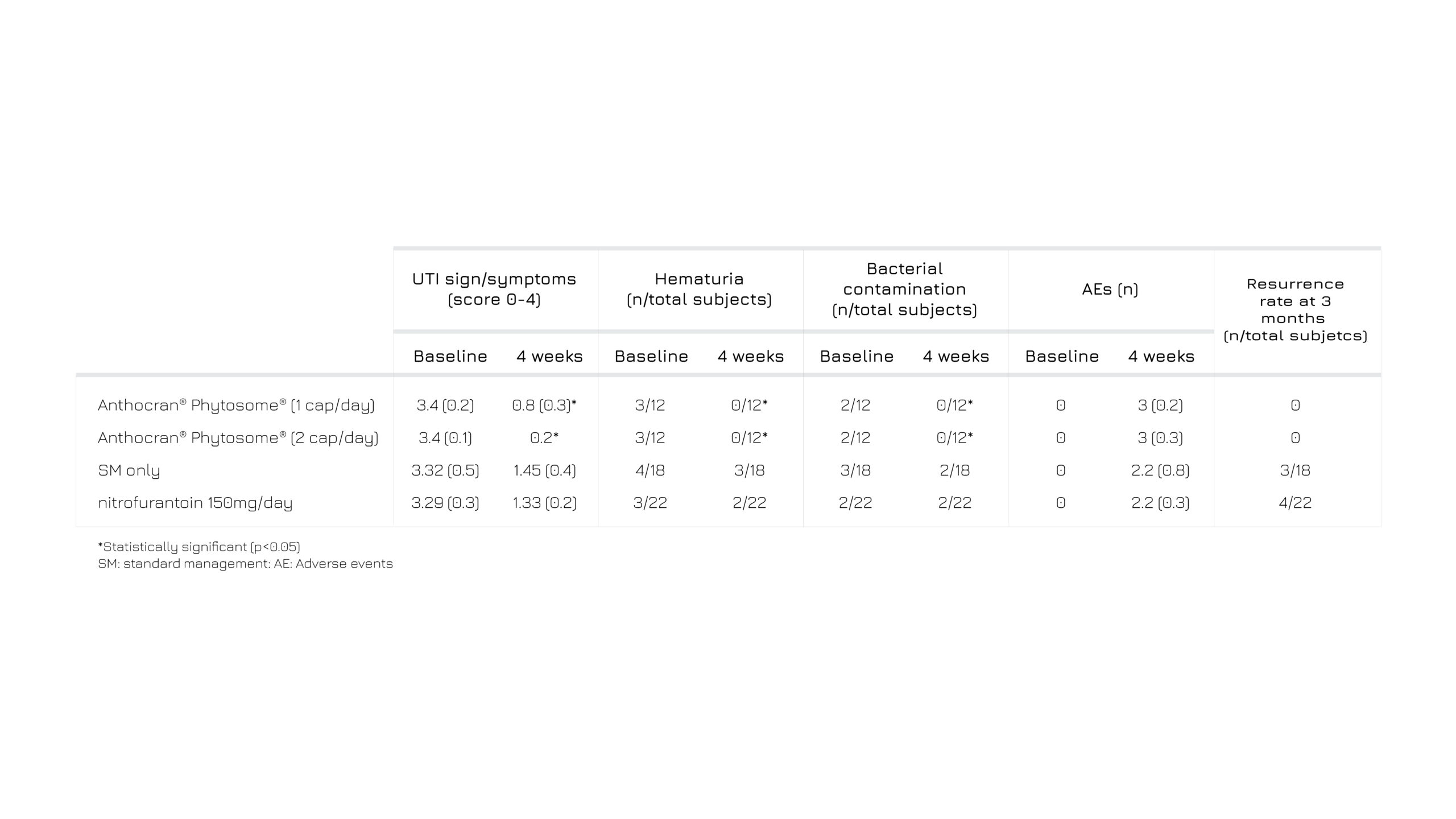Anthocran® Indena Phytosome™
Browse all Indena’s documents about products, events, company information and so much more.
Go to sectionPeer-reviewed science on Anthocran® Indena Phytosome™
Anthocran® Indena Phytosome™ is the result of continuous research and development on cranberry extracts, which started with the identification of new biologically active metabolites and has culminated with human studies on urinary tract health. 1-4
A recent study4 study investigated the effect of Anthocran® Indena Phytosome™ supplementation, on the urinary tract health in postmenopausal women taking sodium-glucose co-transporter-2 (SGLT2) inhibitors to control blood sugar profile.
Conducted as a randomized, double-blind, placebo-controlled trial, the research involved 46 women aged 70 or older. Over a six-month period, the treatment group received 120 mg of Anthocran® Indena Phytosome™ daily, while the control group was given a placebo.
The study's primary objective was to assess the effectiveness of Anthocran® Indena Phytosome™ on urinary tract health numbering discomfort episodes, as measured by urinalysis and urine culture.
Results showed that after six months, the group receiving the cranberry extract experienced a stable wellbeing condition of urinary tract, with only one episode reported compared to six in the placebo group, representing an 83% reduction.
Furthermore, only one subject in the treated group reported any confirmed discomfort, compared to five in the placebo group, leading to an 80% reduction in the number of subjects experiencing UTIs.
These findings suggest that Anthocran® Indena Phytosome™ is effective for for long term urinary tract health in a population prone to UTI.
HPLC analysis has allowed a complete profiling of the bioactive components in Anthocran® Indena Phytosome™, including PACs (proanthocyanidins) but also other naturally occurring polyphenols typically found in cranberry juice. Final results showed that Anthocran® Indena Phytosome™ maintains the same phytochemical profile of natural cranberries, thanks to its unique and careful industrial manufacturing processes.1
Moreover, a pharmacokinetic study conducted with an innovative method has allowed researchers to identify 42 urine metabolites, and provide new data to understand the protective activity of cranberry extracts for the urinary tract. In particular, valeric acids and valerolactons – well known PAC metabolites – were identified for the first time in human urines after cranberry intake.2
An ex-vivo study on human urines (with 13 healthy female volunteers) compared the effect of unformulated cranberry extract (unitary PACs dose = 36 mg) to Anthocran® Indena Phytosome™ (unitary PACs dose = 9 mg) on Candida albicans proliferation in the urinary tract. Results showed that the new formulation matches the performance of the standard extract even at its lower concentration, thanks to the Indena Phytosome™ strategy that optimizes the absorption of phytoactive compounds and their delivery to target tissues (Figure 1).2
Figure 1: Unformulated extract vs Anthocran® Indena Phytosome™ activity on Candida albicans at different timesteps.2
An important study was conducted on 64 subjects prone to UTIs in the post-operative period after undergoing non-complicated surgery requiring catheterization. Its goal was to verify the actual benefit of the add-on supplementation with Anthocran® Indena Phytosome™ (120 or 240 mg/die) compared to standard management. Subjects were divided into 4 groups, which were assigned different supplementations for 4 weeks and then monitored for 3 months of follow-up.3
The subjects belonging to Anthocran® Indena Phytosome™ groups experienced lower rates of urinary issues, measured with a validated VAS score. Furthermore, after 4 weeks no blood or traces of bacterial contamination were found in the corresponding samples, achieving the goal of zero total re-occurrence vs 17% and 18% in the two control groups.3
Table 1: Efficacy and safety of Anthocran® Indena Phytosome™ vs SM.3
Bibliography
1 Indena internal data
2 G.Baron et al; Biochemical Pharmacology, 173 113726, (2020)
3 R.Cotellese et al; Journal of Dietary Supplements, E-pub (2021)
4 Rondanelli M. et al. Nutrients 16.13 (2024):2113
Sorry, our website doesn't support IE11 and older versions
For a better experience try a modern browser:
This is a private file, to request the download of this resource, please fullfill the fields below.

